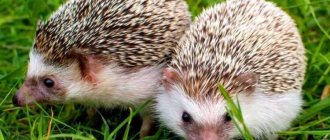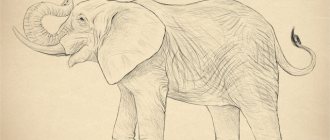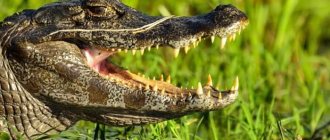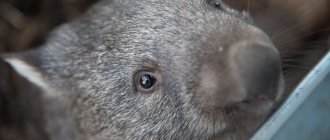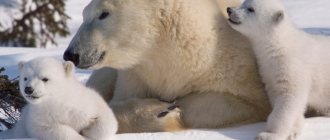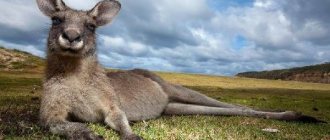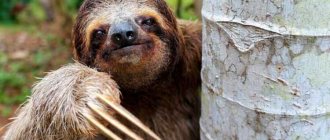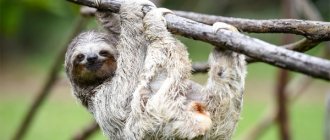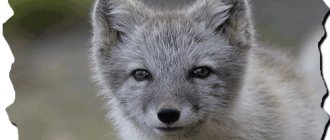Kangaroo is a unique animal. This is the only large mammal that moves in huge leaps, relying on powerful hind legs and a long tail. Their front legs are small and weak, similar in appearance to human hands. This unusual animal is predominantly nocturnal, and during the day it hides in the grass, while taking funny poses. Lovers of nature and unusual animals will be interested to know where kangaroos live, how they reproduce and what they eat.
Habitat of kangaroos
Where does a kangaroo live? They live far away in Australia and New Guinea and on the small islands in between. They inhabit many different habitats, from deserts to rainforests! There they like to live in caves, trees and bushes.
Kangaroos are born measuring between 5 and 15 centimeters! The eyes and ears are still closed, the body is naked. However, this tiny creature manages to crawl from the birth canal on its mother's fur and into the safety of her pouch, usually in just two minutes. There he sucks milk. It remains in the mother's pouch for up to seven months.
Pregnancy lasts about 6-7 months. When necessary, such as when there is not enough water or food, the mother kangaroo can terminate the pregnancy for up to six months. During this time, the embryo stops developing.
A total of 68 different species of kangaroos are found in Australia and nearby islands such as New Guinea and Tasmania. The smallest kangaroo is the muskrat kangaroo (28 centimeters, 500 grams), the largest is the red giant kangaroo: it grows up to 165 centimeters and weighs up to 95 kilograms. His tail becomes another 110 centimeters long! Larger species of kangaroos live up to 12–18 years in the wild.
Famous representatives are the red giant kangaroo, the shaggy rabbit kangaroo, the tree kangaroo, the swamp kangaroo and the rock kangaroo.
Reproduction and raising of offspring
Kangaroos become sexually mature at the age of 2 years. These marsupials do not have a specific mating season; they are ready to reproduce throughout the year. But among animals living in arid regions, mating occurs during the rainy season, and lasts from October to April.
Female kangaroos are able to control their own pregnancy. If mating and fertilization occurred while the marsupial mother is nursing the previous baby, she “postpones” the development of the embryo, and the next birth will occur when the first baby matures and leaves the brood pouch.
Mating season
Kangaroos are usually quite peaceful, and conflicts rarely arise between them. But during the mating season, males stage real battles for the right to own a female. And the martial art of these animals is at its best! It’s not for nothing that kangaroos are called four-legged kickboxers, because during the fight they strike each other with all four limbs.
Boxing match between two male kangaroos
Marsupials box with their front paws and at the same time kick their opponents with their powerful hind legs, keeping their body balanced on their thick tail. And in such fights without rules, the tactics of the males are simple: to force the competitor to give up and retreat. Kangaroo fights are fierce and violent, but rarely lead to death, although both males are left with injuries and fractures after the fight.
A male who has defeated his rivals demonstrates his leadership by leaving odorous marks of saliva everywhere. By the way, he also marks females with his saliva, signaling to the rest of the male family that it is better not to approach his chosen ones.
Poll: have you ever seen kangaroo boxing matches?
Yes, I always watch the fights of these animals with interest.
0%
Yes, I saw two kangaroos fighting on TV several times.
60%
No, but I would really like to, I think it’s a fascinating and unforgettable spectacle.
20%
No, I don’t like watching animals maim and kill each other.
20%
Voted: 5
Duration of pregnancy and childbirth
Recommended by topic
Fox Panda Lynx
Female kangaroos bear future offspring for 30-35 days. In such a short period of time, the embryo does not have time to fully form, so babies are born in the form of an underdeveloped embryo, only 2.5 cm in size, and similar to a translucent worm. Most species of marsupials give birth to only 1 cub, but large red kangaroos can have from 1 to 3 babies in one litter.
When the time comes to give birth, the female looks for a secluded place and assumes a position in which her tail is located between her hind legs. It is on the tail that the newborn embryo falls and immediately begins to fight for its life. The cub has a long way to go and crawls to the brood pouch. Moreover, the mother practically does not help the baby, except for licking her fur, leaving a wet path that serves as a kind of guide for the kangaroo.
Caring for offspring
As soon as the embryo finds itself in the warm mother's pouch, it immediately attaches itself to one of the nipples and will spend almost 2 months in this position. In a cozy and reliable cradle, the main development of the baby takes place, which grows stronger and is saturated with the mother’s nutritious milk.
The baby is under the reliable protection of its mother
The female kangaroo is able to control the brood pouch, and when running away from danger or during rain, she closes the entrance by contracting her muscles so that the baby does not get wet and fall out.
The baby kangaroo spends 6-8 months in its mother's pouch. Starting from the age of six months, he already looks out of the cradle, and after a while he jumps out to get acquainted with the world around him. But at the slightest threat, the cub quickly disappears into the safe and reliable mother’s pouch. In general, females take care of their offspring for a year, after which mature kangaroos leave their mother and begin an independent life.
Question to the expert
What happens if a newborn kangaroo falls to the ground?
Sometimes babies are born so weak (usually in young females) that they are unable to hold on to their mother’s fur, and when they try to crawl to her pouch, they fall down. Unfortunately, the fallen cub has no chance of survival. He cannot get up again on his own, and he cannot count on his mother’s help, because the female, when trying to lift the kangaroo, will simply crush him with her claws.
Habits of the animal kangaroo
Kangaroos are the only large mammals in the world that jump, as can be seen in the kangaroo photo. To do this, they elegantly stand on their tiptoes. Fingers bear the weight of the whole body! Depending on the type, the speed can be up to 55 kilometers per hour. Faster than a car can drive around the city!
Kangaroos jump quite far - up to nine meters! This is more than the world record for men's long jump (8.95 meters).
It has a very long tail, which acts as a rudder. They have brown-gray fur. Kangaroos can live up to 20 years.
Kangaroo rat
The second name of the animal is musk kangaroo. This animal is small in size. Its body reaches a length of forty centimeters, a third is the tail. It is covered with dark thick fur, on which red specks can be seen. The fur on the hind legs is dark brown, but the feet are completely bare. In appearance, the animals are very similar to ordinary kangaroos. The animals live in hard-to-reach thickets along river banks. These animals lead a diurnal lifestyle, lazily digging through plant waste in search of insects, earthworms and plant tubers. They also eat grass, tree bark and palm tree fruits. Females carry their young in a pouch.
How do kangaroos jump?
The kangaroo animal jumps at a speed of 15 kilometers per hour. Only then do they require less energy to jump than for quadrupeds to jump. Once the kangaroo jumps, it can jump further and faster.
Using the energy-saving kangaroo spring trick, every time you land, energy is collected in the tendons of your flexed back legs and released again the next time you push off like a spring.
Kangaroos originally used jumping to scare enemies with a quick attack. Rat kangaroos and other small kangaroos still do this today: they sit in their shelters and jump when there is danger.
Over millions of years, the animals adapted to their new habitat on land: their front legs were shortened to become grasping arms, and their hind legs were long and stable, until kangaroos could only jump rather than run.
Ideal for quickly negotiating ever-increasing paths between ponds and pastures! Because on two legs, kangaroos can jump up to 300 kilometers at a time - and not even get out of breath.
Now scientists are trying to uncover the secrets of kangaroo jumping. For example, they copy the structure of the hind legs when they build prosthetics for people without lower legs.
Carbon fiber artificial legs spring back like kangaroo tendons, and thus make amazing things possible: sprinters compete on these replacement legs in the Olympic Games for the disabled - and run almost as fast as record holders with real legs.
However: even the kangaroo movement has one drawback. It's true that they jump higher, faster and further than most other mammals. But running backwards is something the miracle jumpers will have a hard time coping with.
Symbol of Australia
Kangaroos are called marsupial mammals from the order of two-incisors (they have two large incisors on the lower jaw). This word is used in two meanings:
- It is applied in a broad aspect to all representatives of the kangaroo family, which ranges from 46 to 55 species. Includes a family of herbivores that move by jumping, have undeveloped front legs and, conversely, extremely developed hind legs, and also have a strong tail that helps maintain balance while moving. Because of this structure, the animal’s body is in an upright position, resting on its tail and hind legs. Thus, three species are distinguished: kangaroo rats - the smallest individuals; wallabies are medium in size, outwardly resembling a smaller copy of large animals; Large kangaroos are marsupials of Australia.
- They call the largest representatives of marsupials from the long-legged family, which are the unofficial symbol of Australia: they can be seen on the coat of arms and coins.
Representatives of the family live both in arid regions and tropical forests in Australia, Tasmania, New Guinea, and the Bismarck Islands. At the end of the XIX - beginning of the XX century. They took root well on the territory of Germany and England, reproduced successfully and even tolerated snowy winters well, but they were powerless against poachers, who completely exterminated them.
Kangaroo diet
What does a kangaroo eat? These are herbs, leaves, seeds, fruits, tubers, onions and even noble mushrooms such as truffles. There are beetle larvae on the menu. Like cattle, they can choke and have difficulty digesting food.
What do joeeys eat??
The nanny is called the cub. Marsupials are born before they are fully developed . Because their pregnancy is so short, they are blind, hairless and very, very small. In the case of ground kangaroos, the baby fits into the mother's pouch and survives on the mother's milk for approximately 9 months...
During the last weeks the baby's head will already be visible in its mother's pouch, looking curiously and probably looking for the kangaroo's food. Begins to leave, returning to the bag, until it moves forever and graduates on a herbivorous diet . Here you can learn more about the function of the kangaroo pouch.
Behavior of kangaroos in the wild
Kangaroos use their short front legs as hands. It holds branches while eating leaves or scratching or combing its fur.
But when things get serious, the front paws become really important: kangaroos grab their opponents, scratch them, and sometimes punch them - boxing them. But much more dangerous are strong hind legs.
Variety of species
There are 69 species of kangaroos, which are divided into three main groups: small, medium and giant. The largest marsupial animal is the red kangaroo: its height at the withers is 1-1.6 meters, and the tallest males sometimes reach 2 meters. The tail length adds another 90-110 cm, and the weight ranges from 50 to 90 kg. These animals move in huge leaps up to 10 meters long, reaching speeds of up to 50-60 km/h. The smallest representative of this family is the musk kangaroo. Its height is only 15-20 cm, and its weight is 340 grams.
The most common species is the red steppe kangaroo. In terms of size, it belongs to the middle group and is distributed throughout almost the entire Australian continent, excluding the tropical forest region. The friendliest and most trusting species is the giant gray kangaroo, and the most aggressive is the mountain wallaroo. This animal can show unreasonable aggression and get into fights even when nothing threatens it. At the same time, wallaroos prefer to scratch and bite, but never use their powerful hind legs, like most of their relatives.
Structure of a kangaroo
Like all kangaroos, the tail is especially important for giant kangaroos. It maintains balance, supports itself while sitting and fighting with other kangaroos: when such a kangaroo kicks, it can support itself with its tail, like a third leg, without falling.
The tail is used not only for balance and momentum when jumping, but also as a full-fledged leg on which marsupials support themselves when walking slowly.
Lifestyle and behavioral characteristics
Small marsupials are active at night and go out in search of food at sunset. And the twilight lifestyle of kangaroos is due not only to the fact that they try not to attract the attention of predators, but also to the hot Australian climate. Therefore, animals prefer to feed at night and rest during the daytime, escaping the scorching rays of the sun under the shade of trees or in thickets of grass.
But representatives of large kangaroos eat at any time of the day, although they also try to hide in secluded shaded places at midday, when the heat peaks.
Kangaroo lifestyle
Kangaroos jump, wrestle, scratch and bite each other. They can even kill an opponent with their hind legs, they are so strong. Male kangaroos have very muscular shoulders and long front legs. And a real “belly shield”: the skin is twice as thick and softens blows.
Adult male kangaroos fight for their place in the hierarchy of boxing matches. Usually the oldest animal is dominant. Males lower in the hierarchy can only reproduce if the pack leader briefly ignores them.
When the marsupial feels threatened, it hits the enemy with its hind legs. If this does not work, the animal does not shy away from luring the enemy into the water, pushing him and drowning him. And yet they look so cute.
Baby sac of a female kangaroo
Baby kangaroos remain in their mother's pouch for up to seven months. But babies also go on excursions as soon as they are no longer attached to the pacifier. A mother kangaroo makes sure nothing happens to her baby.
Most kangaroos always give birth to one baby, only the muskrat kangaroo gives birth to two or three babies at a time. The bag can be tight!
The description of the kangaroo can be continued by talking about its character. Most kangaroos are solitary animals. Mothers are accompanied only by their young. Larger kangaroo species also form flocks of 50 or more animals.
Relationships with people
In nature, the large kangaroo has few enemies: kangaroo meat only attracts foxes, dingoes and birds of prey (and even then, marsupials are quite capable of protecting themselves with the help of their hind legs). But relations with humans are tense: pastoralists, not without reason, accuse them of damaging crops in pastures, and therefore shoot them or scatter poisonous baits.
In addition, most species (only nine are protected by law) are allowed to be hunted to regulate numbers: kangaroo meat, which contains a huge amount of protein and only 2% fat. It is worth noting that kangaroo meat has long been one of the main sources of food for the natives. Clothes, shoes and other products are made from animal skins. Animals are often hunted for sport, so many species are found only in uninhabited areas


